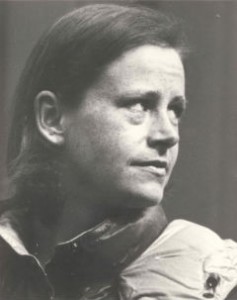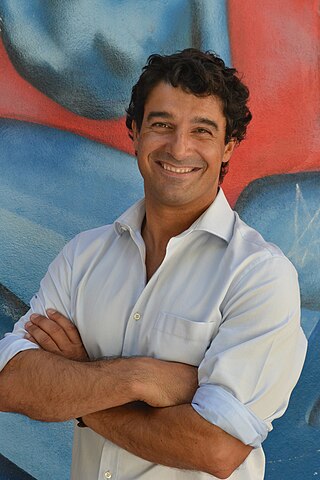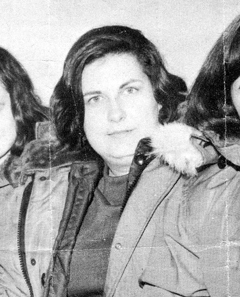This is a list of Antarctic women. It includes explorers, researchers, educators, administrators and adventurers. They are arranged by the country of their latest citizenship rather than by country of birth.

Albert Paddock Crary, was a pioneer polar geophysicist and glaciologist. He was the first person to have set foot on both the North and South Poles, having made it to the North Pole on May 3, 1952 and then to the South Pole on February 12, 1961, as the leader of a team of eight. The South Pole expedition set out from McMurdo Station on December 10, 1960, using three Snowcats with trailers. Crary was the seventh expedition leader to arrive at the South Pole by surface transportation. He was widely admired for his intellect, wit, skills and as a great administrator for polar research expeditions.

Sir Vivian Ernest Fuchs was an English scientist-explorer and expedition organizer. He led the Commonwealth Trans-Antarctic Expedition which reached the South Pole overland in 1958.
The Norwegian–British–Swedish Antarctic Expedition (1949–1952) was the first Antarctica expedition involving an international team of scientists. The team members came from Norway, Sweden and the British Commonwealth of Nations.

Laurence McKinley Gould was an American geologist, educator, and polar explorer. He made expeditions to both the Arctic and Antarctic, and was chief scientist on Richard Evelyn Byrd's first Antarctic expedition, which Gould described in his 1931 book Cold: the Record of an Antarctic Sledge Journey. He served as president of Carleton College from 1945 to 1962, and president of the American Association for the Advancement of Science in 1964. His namesakes include the research vessel Laurence M. Gould as well as Antarctic features including Gould Bay, Gould Coast, and Mount Gould.

Maria Vasilyevna Klenova was a Russian and Soviet marine geologist and one of the founders of Russian marine science and contributor to the first Soviet Antarctic atlas.
Teodor Gheorghe Negoiță was a polar region explorer. In 1995 he became the first known Romanian explorer to reach the North Pole.

Virginia Frances, Lady Twisleton-Wykeham-Fiennes, known as Ginny Fiennes, was an English explorer. She was the first woman to be awarded the Polar Medal, and the first woman to be voted in to join the Antarctic Club in recognition of her research work for the British Antarctic Survey and University of Sheffield into very low frequency radio propagation. Her husband was adventurer Ranulph Fiennes.

Christo Pimpirev is a Bulgarian scientist (geologist) and polar explorer.

Felicity Ann Dawn Aston is a British explorer, author and climate scientist.

José Carlos Caetano Xavier is a Portuguese scientist and polar explorer.
Aditi Pant, is an Indian oceanographer. She was the first Indian woman to visit Antarctica, alongside geologist Sudipta Sengupta in 1983 as part of the Indian Antarctic Program. She has held prominent positions at institutions including the National Institute of Oceanography, National Chemical Laboratory, University of Pune, and Maharashtra Academy of Sciences.

Irene Bernasconi was an Argentine marine biologist specializing in echinoderm research and best known for her work in the Antarctic. She was the first echinoderm specialist in Argentina and spent 55 years conducting research into echinoderms found in the Argentine Sea. Her main focus was sea stars; however, she also conducted research into brittle stars and sea urchins.
Florica Topârceanu is an Antarctic researcher, best known for her work was on Antarctic aquatic viruses and the development of the Antarctic scientific community in Romania. She was the first Romanian woman biologist to study life in Antarctica and the first Romanian woman expert to the Antarctic Treaty.

Lois M. Jones was an American geochemist who led the first all-woman science team to Antarctica in 1969. They were also the first women to reach the South Pole. Jones was well regarded for her contribution to geological research in the McMurdo Dry Valleys, one of the few ice-free areas of Antarctica, and published many papers and abstracts.

There may have been women in Antarctica and exploring the regions around Antarctica for many centuries. The most celebrated "first" for women was in 1935 when Caroline Mikkelsen became the first woman to set foot on one of Antarctica's islands. Early male explorers, such as Richard Byrd, named areas of Antarctica after wives and female heads of state. As Antarctica moved from a place of exploration and conquest to a scientific frontier, women worked to be included in the sciences. The first countries to have female scientists working in Antarctica were the Soviet Union, South Africa and Argentina.

This is a Timeline ofwomen in Antarctica. This article describes many of the firsts and accomplishments that women from various countries have accomplished in different fields of endeavor on the continent of Antarctica.

William Joseph Lambart Sladen MBE was a Welsh American naturalist who was an Antarctic explorer and a specialist on polar bird life. He was professor emeritus at Johns Hopkins University in the United States. He researched the mating of Antarctic birds and received the Polar Medal. Two mountains on the continent, Mount Sladen and Sladen Summit, are named in his honour. His discovery in the 1960s that DDT residues could be found in adelie penguins contributed to the banning of DDT in the U.S.